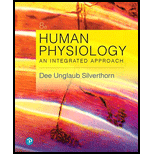
a.
To determine: The similarity and differences between autonomic ganglia and CNS nuclei.
Introduction: Central nervous system (CNS) comprises of brain and spinal cord. The complete CNS is made up of two major cells neurons and glial cells. Glial cells have a major contribution in the CNS and they provide support and insulation to the neurons. The ganglion is property of peripheral nerve cells and structures similar to ganglion in CNS is called as nuclei.
b.
To determine: The similarity and differences between adrenal medulla and the posterior pituitary gland.
Introduction: The glands are the secretory organs in which the cell produce chemicals are called as hormones and these hormones act as chemical messengers throughout the body. The glands can be either endocrine or exocrine. Adrenal gland and pituitary gland are both endocrine glands.
c.
To determine: The similarity and differences between axon terminal and varicosities.
Introduction: The neurons are important part of the coordination mechanism of the body. The neurons secrete signaling molecules called as neurotransmitters and these molecules can stimulate the target cell as well as other neurons.
Want to see the full answer?
Check out a sample textbook solution
Chapter 11 Solutions
Human Physiology: An Integrated Approach (8th Edition)
- What is behavioral adaptarrow_forward22. Which of the following mutant proteins is expected to have a dominant negative effect when over- expressed in normal cells? a. mutant PI3-kinase that lacks the SH2 domain but retains the kinase function b. mutant Grb2 protein that cannot bind to RTK c. mutant RTK that lacks the extracellular domain d. mutant PDK that has the PH domain but lost the kinase function e. all of the abovearrow_forwardWhat is the label ?arrow_forward
- Can you described the image? Can you explain the question as well their answer and how to get to an answer to an problem like this?arrow_forwardglg 112 mid unit assignment Identifying melting processesarrow_forwardGive only the mode of inheritance consistent with all three pedigrees and only two reasons that support this, nothing more, (it shouldn't take too long)arrow_forward
- Oarrow_forwardDescribe the principle of homeostasis.arrow_forwardExplain how the hormones of the glands listed below travel around the body to target organs and tissues : Pituitary gland Hypothalamus Thyroid Parathyroid Adrenal Pineal Pancreas(islets of langerhans) Gonads (testes and ovaries) Placentaarrow_forward
- Essentials of Pharmacology for Health ProfessionsNursingISBN:9781305441620Author:WOODROWPublisher:Cengage
 Comprehensive Medical Assisting: Administrative a...NursingISBN:9781305964792Author:Wilburta Q. Lindh, Carol D. Tamparo, Barbara M. Dahl, Julie Morris, Cindy CorreaPublisher:Cengage Learning
Comprehensive Medical Assisting: Administrative a...NursingISBN:9781305964792Author:Wilburta Q. Lindh, Carol D. Tamparo, Barbara M. Dahl, Julie Morris, Cindy CorreaPublisher:Cengage Learning Biology (MindTap Course List)BiologyISBN:9781337392938Author:Eldra Solomon, Charles Martin, Diana W. Martin, Linda R. BergPublisher:Cengage Learning
Biology (MindTap Course List)BiologyISBN:9781337392938Author:Eldra Solomon, Charles Martin, Diana W. Martin, Linda R. BergPublisher:Cengage Learning - Basic Clinical Lab Competencies for Respiratory C...NursingISBN:9781285244662Author:WhitePublisher:Cengage
 Human Physiology: From Cells to Systems (MindTap ...BiologyISBN:9781285866932Author:Lauralee SherwoodPublisher:Cengage Learning
Human Physiology: From Cells to Systems (MindTap ...BiologyISBN:9781285866932Author:Lauralee SherwoodPublisher:Cengage Learning





